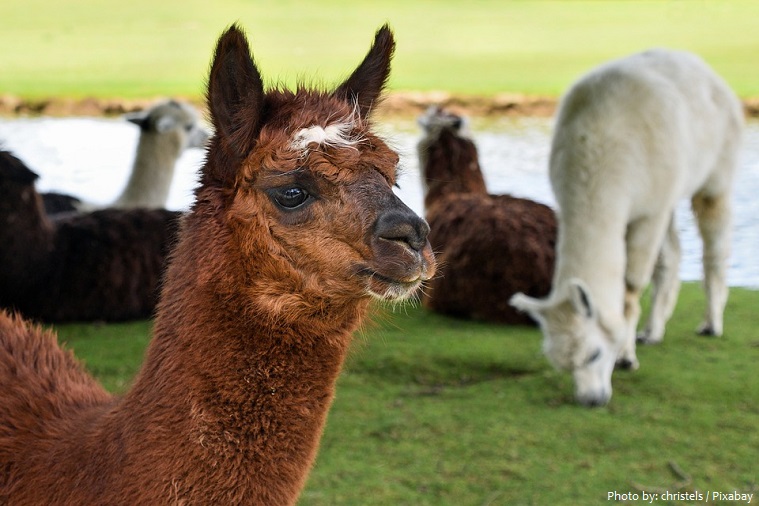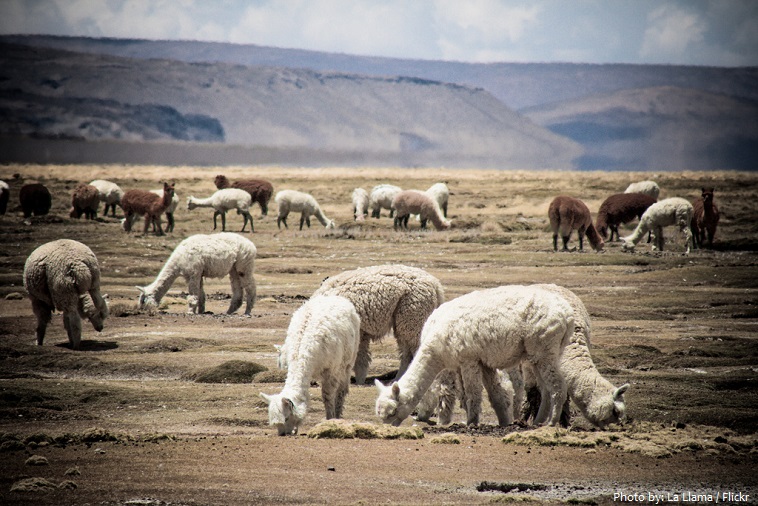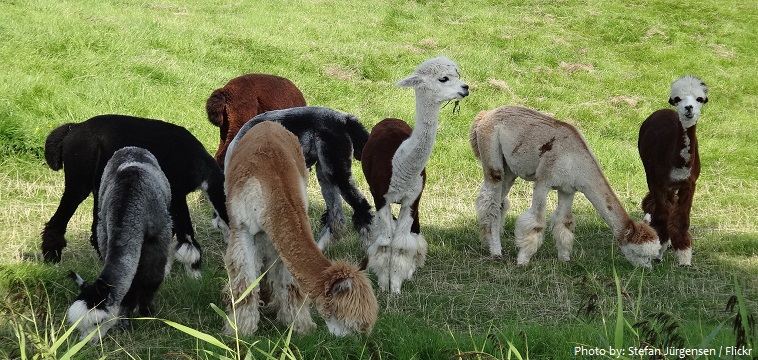Alpaca is South American member of the camel family, Camelidae.
It is closely related to the vicuña, guanaco, and llama (known collectively as lamoids).
There are two breeds of alpaca: the Suri alpaca and the Huacaya alpaca.
The alpaca and the llama were both apparently domesticated several thousand years ago by the Indians of the Andes Mountains of South America. The other two lamoid species, the guanaco and vicuña, exist basically in the wild state.
Alpacas are kept in herds that graze on the level heights of the Andes of Southern Peru, Western Bolivia, Ecuador, and Northern Chile at an altitude of 3,500 m (11,500 ft) to 5,000 meters (16,000 ft) above sea level.
The average lifespan of an alpaca is between 15 and 20 years, and the longest-lived alpaca on record is 27 years.
Alpacas are readily distinguished from llamas by their smaller size; they stand approximately 90 cm (35 inches) high at the shoulder and weigh 55 to 65 kg (121 to 143 pounds).
Like other lamoids, alpacas are slender-bodied animals with a long neck and legs, a short tail, a small head, and large, pointed ears.
The alpaca’s shaggy coat varies in color from the usual black or brown through lighter shades of gray and tan to pale yellow and, occasionally, white.
Alpacas are social animals. They live in herds that are not only composed of other alpacas but also include other species such as llamas, goats, and sheep. Some research points to the existence of hierarchical social order in alpacas.
Alpacas communicate through body language. The most common is spitting when they are in distress, fearful, or mean to show dominance.
Alpacas produce a broad range of vocalizations. The most common is the humming vocalization, which is produced under a variety of circumstances, such as distress or a change in the environment.
Alpacas are browsers who eat most varieties of plant life, including grass, foliage and palatable herbs. They have a split upper lip (like a rabbit) which enables them to cleverly nibble around long and sharp thorns. Their diet is similar to a goat, although they chew their cud like a cow, and their digestive system is somewhere between a horse and a cow. In addition to green plants and grass, they enjoy meadow and lucerne hay.
Alpacas can breed year round. Pregnancies last 11.5 months ± 2 weeks, and usually result in a single offspring or cria. Twins are rare, approximately 1/1000, slightly rarer than the proportion of twins in human births. After a female gives birth, she is generally receptive to breeding again after approximately two weeks. Crias may be weaned through human intervention at approximately 6 months and 27 kilograms (60 pounds).
Alpaca fiber is used for making knitted and woven items, similarly to sheep’s wool. These items include blankets, sweaters, hats, gloves, scarves, a wide variety of textiles and ponchos in South America, and sweaters, socks, coats and bedding in other parts of the world. The fiber comes in more than 52 natural colors as classified in Peru, 12 as classified in Australia, and 16 as classified in the United States.
During the period of Incan civilization, the wearing of robes made of alpaca and vicuña fleeces was reserved for the nobility and royalty.
Alpaca meat was once considered a delicacy by Andean inhabitants. It remains popular among some South American populations.
The Moche people of Northern Peru often used alpaca images in their art.




